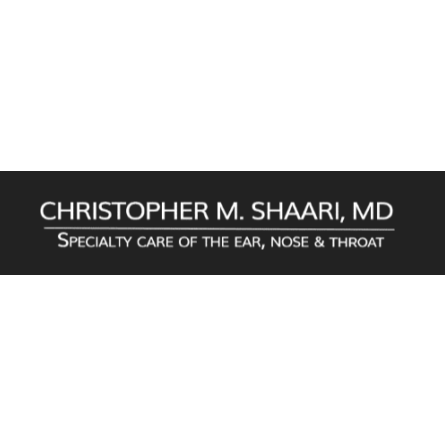- Landline
- (201) 342-8060
- pages/Dr-Christopher-Shaari/306281496120609
- Website
- www.drshaari.com
Description
Dr. Shaari and his staff are committed to providing you with the highest level of care through clinical experience, compassion and integrity. We encourage you to explore our practice website and if you would like to make an appointment, either complete the Appointment Request or call 201-342-8060 during regular office hours.
Reviews
Opening hours
Bios
-

Dr. Christopher M. Shaari
Ear Nose and Throat SpecialistDr. Christopher M. Shaari is board certified by the American Board of Otolaryngology and has practiced in Hackensack, NJ as an Ear Nose and Throat specialist since 1997. He became a physician at 23 years old after completing the Six-Year Accelerated Biomedical Program at Rensselaer Polytechnic Institute and Albany Medical College in 1991. He graduated Summa Cum Laude from Rensselaer Polytechnic Institute and graduated Cum Laude with Distinction in Research from Albany Medical College. He was inducted into the Alpha Omega Alpha Honor Medical Society in his junior year and elected President the following year. While at Albany Medical College he received the Daggett Trust Prize, the Merck Manual Medical Student Award, the Sandoz medical Student Award, the John Milton Bigelow Prize, the Alumni Association Travel Grant, the Jack Spitalny Memorial Research Fellowship and the Dean’s Certificate for Outstanding Research Endeavor. Dr. Shaari completed his internship, residency and fellowship training at Mt. Sinai Medical Center in New York City in 1997. He received the New York Head and Neck Society award in 1997 and was an invited speaker at the First International Conference on Botulinum Toxin in Munich, Germany in 1995. He authored nearly 20 peer-reviewed publications and presented his work at over 20 national and international conferences. Dr. Shaari has invented over 50 worldwide medical patents and has received over 50 awards from patients, doctors, and nurses. Dr. Shaari is currently on staff at the Hackensack University Medical Center and Hudson Crossing Surgical Center. He is a member of the American Rhinologic Society, the American Academy of Otolaryngology-Head and Neck Surgery, and the Alpha Omega Alpha Honor Medical Society. Dr. Shaari Has Been Selected By Physicians To Receive: Castle Connolly Regional Top Doctors New York Metro Area's Top Doctors Bergen's Top Doctors NJ Monthly, Top Doctors NJ Top Docs Jersey's Best, Top Doctors Inside Jersey, Top Doctors Most Recommended Physicians as Chosen by Peers, National Consumers Survey America’s Top Physicians, the Consumer Research Counsel Best Physicians as chosen by their Peers Dr. Shaari Has Been Selected By Patients To Receive: Top 10 Otolaryngologist Specialist in New Jersey The Arnold Gold Foundation Gold Doc Award Patients Choice Award On-Time Physician Award Compassionate Physician Award Top 1% Nationally for ENT Patient Satisfaction, Press-Ganey Surveys Dr. Shaari Has Been Selected By Nurses To Receive: NJ state ranking, Best Physicians as Chosen by Nurses
Education:
Certifications:
Categories
Ear Care(201)342-8060 (201)-342-8060 +12013428060
Map 20 Prospect Ave
Loading map...

